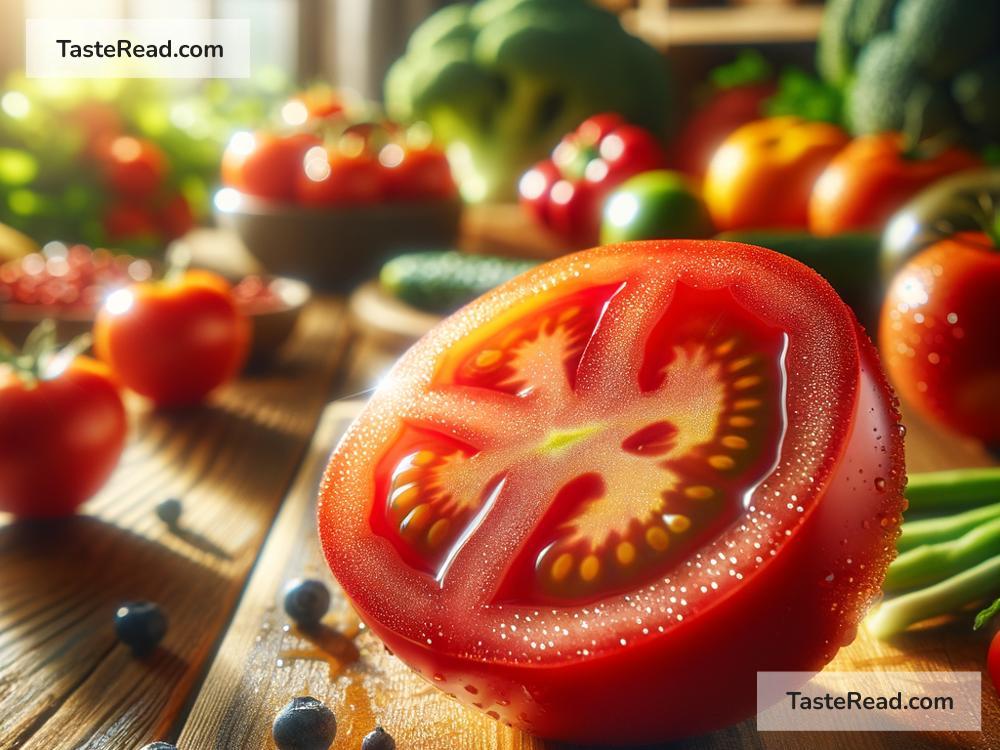Is a Tomato a Fruit or a Vegetable? The Great Debate Simplified
The humble tomato is one of the most popular foods in the world. It’s found in everything from salads to sauces and soups to sandwiches. But there has been an ongoing debate for years: Is the tomato a fruit or a vegetable? The answer isn’t as simple as you might think, and it depends on who you ask—scientists, chefs, or even the law! In this article, we’ll explore why tomatoes can be considered both a fruit and a vegetable, breaking it down in simple terms.
The Science Behind It: A Tomato is a Fruit!
According to science, the tomato is, without a doubt, a fruit. Botanists (scientists who study plants) have a specific way of defining fruits and vegetables. Fruits are the part of the plant that develop from a flower and contain seeds. Using this definition, many foods we commonly think of as vegetables are actually fruits, including cucumbers, bell peppers, pumpkins, and yes—tomatoes!
Here’s how it works: Tomato plants grow flowers, and after pollination, those flowers develop into tomatoes. Every tomato contains seeds that could grow into new tomato plants. Because of this, it is classified scientifically as a fruit.
Think about an apple or an orange. Just like a tomato, these foods have seeds and come from flowers. Nobody argues that apples and oranges are fruits, so technically, the tomato belongs in the same category.
How Did We Start Calling Tomatoes Vegetables?
If a tomato is clearly a fruit in the scientific sense, why do so many people think of it as a vegetable? The answer lies in cooking and culture.
In the kitchen, we usually classify fruits and vegetables based on how they taste and how they’re used in recipes. Fruits are often sweet or tangy, like strawberries, mangoes, or peaches, and they’re commonly used in desserts or eaten raw as snacks. Vegetables, on the other hand, tend to have a savory or earthy flavor. They’re often cooked and added to dishes like soups, stir-frys, and salads.
Tomatoes, while scientifically fruits, don’t fit the typical “sweet” profile of fruits like bananas or apples. Instead, they have a slightly tangy or acidic flavor that pairs well with savory dishes. You’re more likely to find tomatoes in a pasta sauce or on a pizza than in a dessert. Over time, people began thinking of tomatoes as vegetables because of how they’re used in cooking.
The Legal Decision: A Tomato is a Vegetable!
Here’s where the tomato story gets even more interesting. In 1893, the United States Supreme Court was asked to settle this debate in a case called Nix v. Hedden. The case was about taxes. At the time, imported vegetables were subject to a tax, while fruits were not. Tomato importers argued that tomatoes were fruits and should be tax-free. However, the Supreme Court ruled that tomatoes should be treated as vegetables because that’s how they’re used and sold.
The court said that the culinary use of tomatoes matters more than the scientific definition. In everyday language, people consider tomatoes vegetables, so that’s the way the law treated them. This decision didn’t change the science—it just reinforced how people use and think about tomatoes in their daily lives.
Even today, governments, grocery stores, and chefs treat tomatoes as vegetables. When you visit the vegetable aisle in a supermarket, you’ll almost always find tomatoes there, nestled alongside lettuce, carrots, and cucumbers.
So, What’s the Final Answer?
The final answer depends on the question you’re asking. Scientifically, a tomato is a fruit because it grows from a flower and contains seeds. However, culturally and in cooking, a tomato is treated as a vegetable because of its flavor and how it’s used in recipes. So, in a sense, both answers are correct—it just depends on the perspective.
If you’re talking to a botanist, call a tomato a fruit. If you’re chatting with a chef or looking for it in the grocery store, it’s perfectly fine to call it a vegetable. There’s no need to stress about it!
Fun Facts About Tomatoes
Now that you know the answer to the big fruit vs. vegetable debate, here are some fun facts about tomatoes:
- Tomatoes come in many colors, not just red! They can be yellow, orange, purple, green, or even striped.
- There are over 10,000 varieties of tomatoes worldwide. Some are small, like cherry tomatoes, while others are huge, like beefsteak tomatoes.
- Tomatoes are high in nutrients. They contain vitamins C and K, potassium, and lycopene (an antioxidant that’s great for your health).
- Tomatoes were once thought to be poisonous! When they were first brought to Europe from the Americas in the 1500s, people were hesitant to eat them.
Conclusion
The tomato is a plant that manages to blur the lines between fruit and vegetable. Scientifically, it’s a fruit because it grows from a flower and contains seeds. In cooking and everyday use, it’s treated as a vegetable because of its savory flavor and versatility in recipes. Both perspectives are correct in their own way.
So, the next time someone asks you, “Is a tomato a fruit or a vegetable?” smile and tell them it’s a little bit of both. Whether you enjoy it in a fresh salad or a delicious spaghetti sauce, one thing is certain: the tomato is a fantastic food, no matter what you call it!


